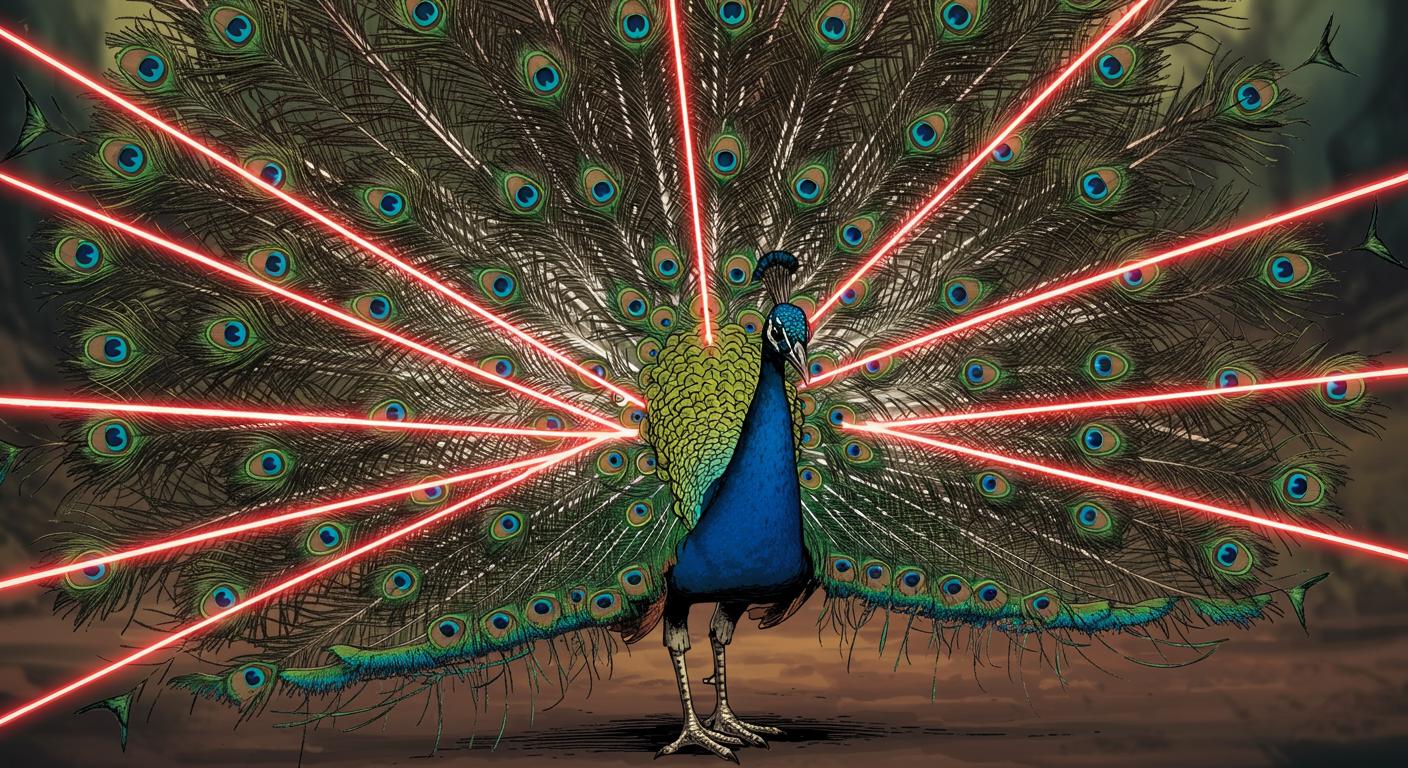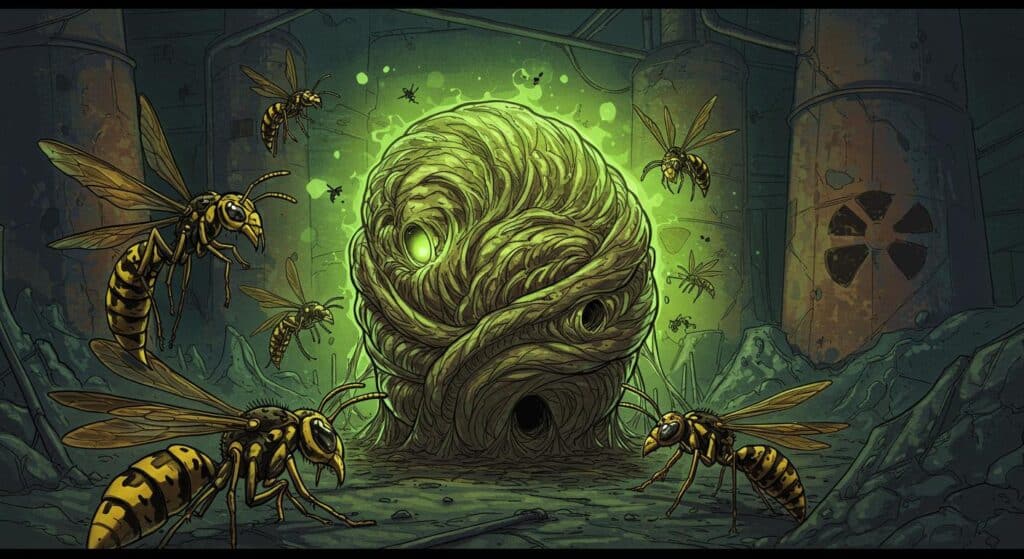Everyone loves a dramatic peacock display—the kind with iridescent blues, unapologetically flashy eyespots, and, apparently, the untapped potential to shoot lasers. In an experiment that reads like the fever dream of both an optometrist and a Victorian milliner, scientists have now coaxed not one, but two frequencies of laser light out of those iconic peacock feathers. Reporting in Ars Technica, Jennifer Ouellette summarizes this unusual feat as the first known instance of a “biolaser cavity” discovered in the animal kingdom, citing a recent publication in Scientific Reports.
When Iridescence Crosses Into Science Fiction
Peacock feathers have always been a bit extra. Their dazzling colors aren’t the result of basic pigments but stem from minutely engineered nanostructures—ordered melanin rods encased in keratin, all precisely arranged in the feather’s barbules. As described in Ouellette’s report, this is an elegant example of a photonic crystal, which acts as a kind of microscopic traffic director for light. Subtle changes to this architecture—say, shifting the spacing or orientation of the rods—allow for a spectrum of colors, no pigment necessary. Photonic crystals aren’t exclusive to peacock tails; butterflies and rainbow weevils manipulate structural features of their scales to similar effect, according to the research team.
Interestingly, these colors don’t shift based on viewing angle, and the structures also serve practical roles—acting as environmental shields for the insects or birds that sport them. Researchers believe that unlocking the tricks behind these naturally occurring photonic crystals could eventually allow the creation of new materials with practical uses: iridescent windows, self-cleaning or waterproof surfaces, even anti-counterfeiting features for items like paper currency. As Ouellette indicates, current synthetic photonic crystals can’t yet compete with the resilience or versatility of nature’s designs.
Lasers, But Make It Biocompatible
The real twist in this story comes when peacock feathers, after being sourced (sans dyes or other impurities) from craft suppliers, were subjected to repeated soaks with common dye solutions, then allowed to dry thoroughly between applications. After multiple cycles of staining and drying—never just one—the team illuminated the feathers with pulsed light and measured the output. Across all color regions of the feathers’ eyespots, laser emissions appeared at two distinct wavelengths, with green areas producing the most intense results. These findings, detailed in Ars Technica and drawn from the research article, suggest that the process of multiple dye applications may aid the diffusion of dye and solvent into the feather microstructure, as well as loosen fibrils in the keratin sheath—creating the ideal environment for lasing.
Notably, the identity of the precise laser cavity remains uncertain. The usual suspects—those keratin-coated melanin rods—don’t seem to be responsible for the effect. As co-author Nathan Dawson of Florida Polytechnic University explained in comments to Science and cited by Ouellette, tiny protein granules or similar substructures could be playing the starring role. The research team imagines that, in time, their work might enable the development of biocompatible lasers suitable for embedding in living tissues for sensing, imaging, or therapeutic purposes. Earlier in the report, it’s mentioned that applications like wearable lasers or secure materials for tamper-evident currency may not be far off, at least in theory—though so far, these ideas remain in the realm of scientific aspiration.
The Weirdness Is the Point
There’s something both deeply satisfying and ever-so-slightly absurd about the leap from “admire this bird” to “this bird can shoot lasers.” Nature, it seems, is still ahead of our best tech, couching flexible, resilient light modifiers in the most decorative packages. By unraveling how natural photonic structures pull off their tricks, scientists hope to spark a new generation of materials—like self-cleaning cars or waterproof jackets—using blueprints hidden in plain sight, as Ouellette’s summary makes clear.
But maybe the real marvel is how the everyday—arts-and-craft supply peacock feathers, no less—can upend our expectations when placed under the right sort of scrutiny. If peacock feathers become laser emitters with nothing more complex than household dye and a bit of patience, what else have we underestimated, simply because we assumed we already knew the story? Nature might not just imitate technology; sometimes, it preempts it entirely.
And wouldn’t you know it, beneath the glitter and glam, those birds had lasers all along. Isn’t it worth pausing to wonder what else in our feathered, scaled, or even leafy neighbors is waiting to be discovered?







